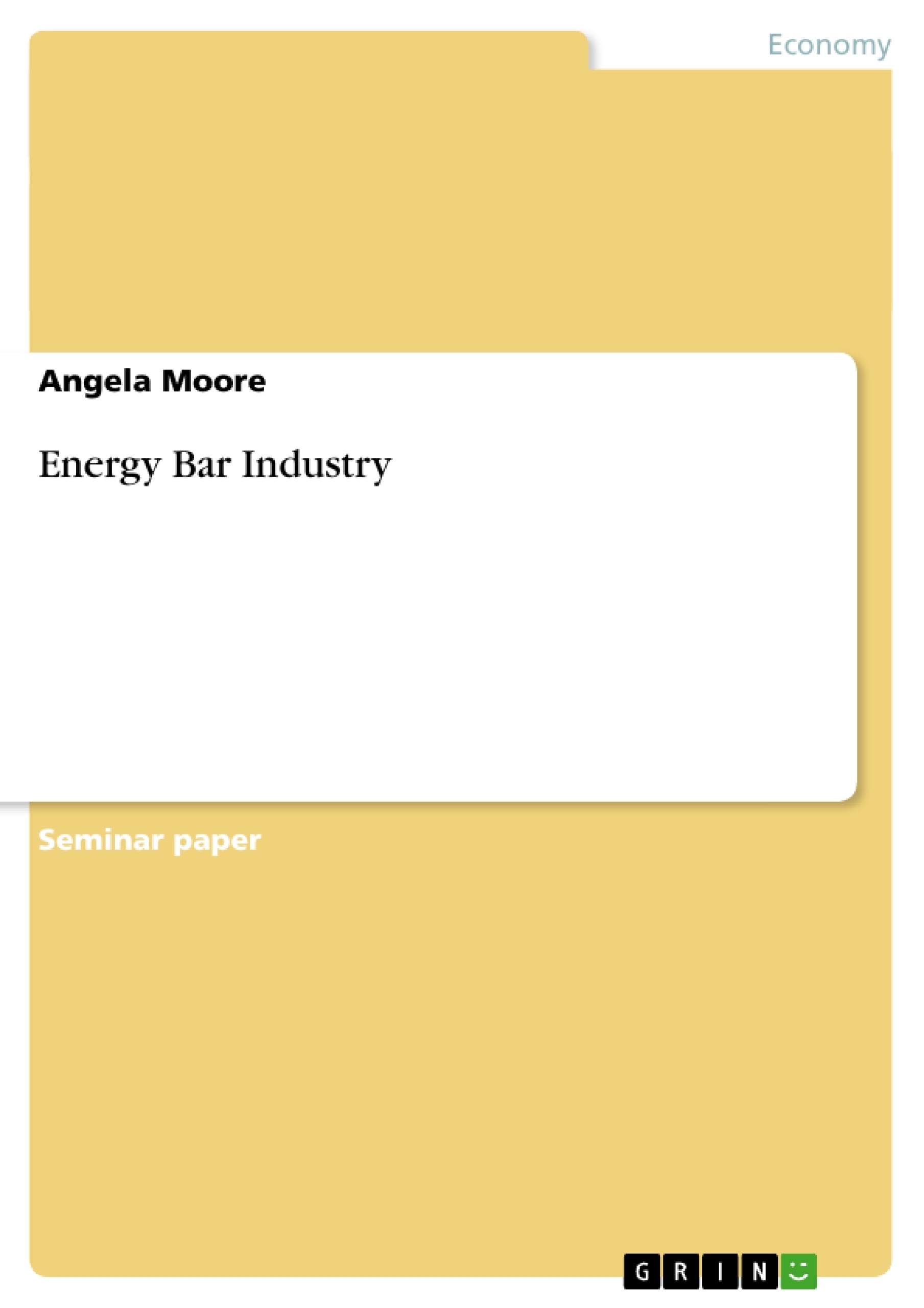The energy bar industry begun with a single creation in 1986 by PowerBar as a means to provide athletes with energy food. This was located in Berkeley, California. Initially, before any form of competition, it was distributed at bike shops and covered major events of running and biking. This saw the rise in demand of the energy bar and the rise in competition in this young industry. The growth of energy bar industry has been quick with its rise to $100 million to over $2 billion by 1996 which is only a decade. In fact, market analysis showed that the industry had an expected growth of 10 percent per year. With the rise of many firms offering the energy bar, different flavors were introduced to meet the needs of various customers. Market research conducted by PowerBar enabled finding various unsatisfied needs which led it to producing better brands than those it originally produced even though it kept its formula of ingredients (40/30/30). The industry has considered through the energy bar to address health including focusing on nutrition needs of the customers rather than just providing energy bars. The rise in various flavors which meets the needs of the customers has made the industry to be highly responsive to changes in customer’s tastes and preferences while various promotional methods have been adopted for the sole purpose of attaining competitive advantages, product positioning and customer loyalty in the industry. The level of competition has continued to grow everyday as customers’ demands are analyzed, market segments unsatisfied selected, the market information critically researched and analyzed and most importantly the ability of the market base continual growth.
Inhaltsverzeichnis (Table of Contents)
- Overview of energy bar industry
- Energy bar customers
- The market of the energy bar
- High performance athletes
Zielsetzung und Themenschwerpunkte (Objectives and Key Themes)
This text examines the development and growth of the energy bar industry, exploring its origins, target markets, and evolving customer needs.
- The evolution of the energy bar industry from its inception to its widespread adoption.
- The changing needs and preferences of energy bar consumers over time.
- The role of competition and innovation in driving market growth and product differentiation.
- The importance of targeted marketing and customer segmentation in reaching specific consumer groups.
- The use of celebrity endorsements and brand information dissemination in influencing customer perceptions and driving product sales.
Zusammenfassung der Kapitel (Chapter Summaries)
- Overview of energy bar industry: This chapter explores the origins and rapid growth of the energy bar industry, emphasizing its evolution from a niche product for athletes to a widely consumed food item catering to diverse needs. It highlights the role of competition, product innovation, and customer-driven changes in shaping the industry's development.
- Energy bar customers: This chapter examines the changing needs and preferences of energy bar consumers, focusing on the shift from targeting solely athletes to addressing a broader range of demographics and dietary needs. It explores the role of taste, texture, and nutritional content in attracting and retaining customers.
- The market of the energy bar: This chapter explores the broader market for energy bars, examining the segmentation strategies employed to reach different customer groups, including athletes, health-conscious individuals, and those seeking a convenient energy boost. It highlights the importance of market analysis and competitor differentiation in achieving market success.
Schlüsselwörter (Keywords)
This text focuses on the energy bar industry, exploring key themes like market segmentation, product innovation, consumer preferences, and competitive strategies. It analyzes the industry's evolution, customer demographics, and the role of endorsements in driving product sales.
- Citar trabajo
- Angela Moore (Autor), 2012, Energy Bar Industry, Múnich, GRIN Verlag, https://www.grin.com/document/270019



